As the shinkansen arrives in Tokyo, I feel its mood again.
Streets irradiated by a kaleidoscope of neon-lit brand signs, giant screens masking facades to boast loud video clips or advertisements, while elsewhere jazz is playing on the streets through benevolent loudspeakers; forest of ads hanging in metro wagons, invasion of signs for discounts, directions, special offers, informations in large 7-story electronic hypermalls; intertwined smells of hundreds of tiny restaurants, each exposing large menus and plastic samples.
Cognitive overload.
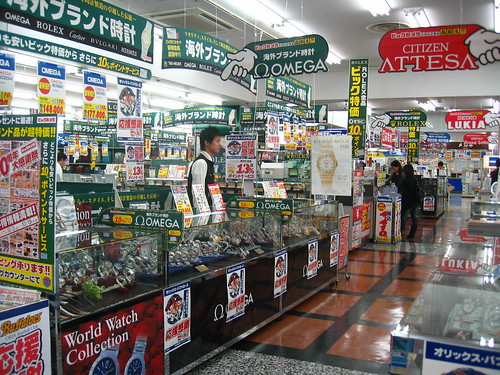
 Overwhelming signs in Bic Camera, by theefer
Overwhelming signs in Bic Camera, by theeferYet it is not noise, for noise is disorganized, superfluous, confusing. It is not noise, but information. Every sign, sound, image, carries a meaning and a purpose: the array of restaurant logos explicits the dinning opportunities in the building, the ringing melodies on the Yamanote line identify the stations and warns of the closing doors, the metro screens advertise delays and notices, the ticket vending machines greet, guide and thank you ceremoniously, etc.

 Restaurant neon signs, by theefer
Restaurant neon signs, by theeferThe information isn’t merely static either: televisions, everywhere.
In the cars, in the kitchen, on mobile phones or huge screens hung on walls in the streets, in the metro, in restaurants, in the background of your pachinko pinball machine, even in saunas or on the fridge of your local convenient store.
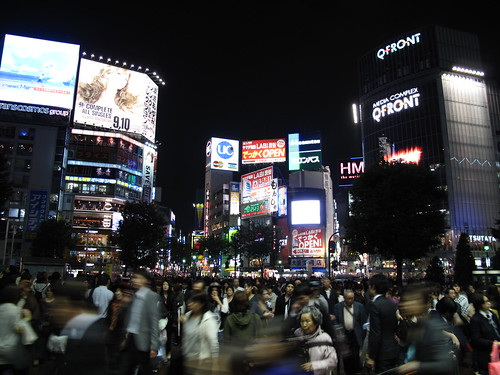
 Shibuya crossing at night, by theefer
Shibuya crossing at night, by theeferLet alone Donkihote. The modern equivalent of the cave of Ali Baba and the forty thieves, except here it would more likely be forty million thieves addicted to kinky maid costumes, cheap jewelery, obsolete video games, suspicious sex toys, funny underwear, random suitcases, dancing robots, plastic airplanes, etc. In short, it is filled with the integrality of the things you thought wouldn’t need to exist.

 Donkihote cavern, by theefer
Donkihote cavern, by theefer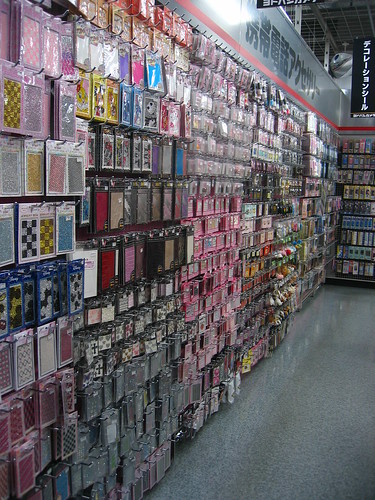
 Keitai decorations, by theefer
Keitai decorations, by theeferIndeed, Japan is a land of contrasts: Kabuki-cho’s overwhelming cognitive overload vs the perfect minimalist of Buddhist Zen gardens, the restless frenzy of a consumerist society vs the peaceful purity of symbols.
Both unreal extremes, which the Japanese inhabit joyfully, naturally.
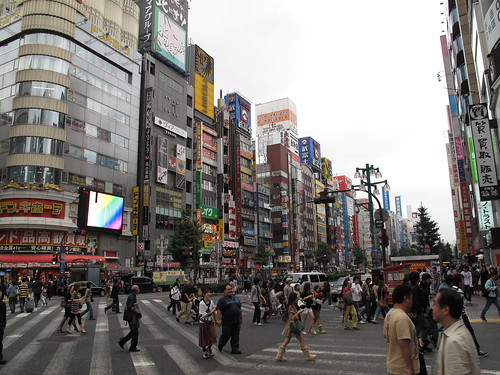
 Kabuki-cho facades, by theefer
Kabuki-cho facades, by theeferThere has to be a cultural tolerance for coping with the ambient excess of information stimuli, a special ethnic capacity to fade it all in the background and interpret it as the background for everyday life, only reaching to it occasionally when needed.
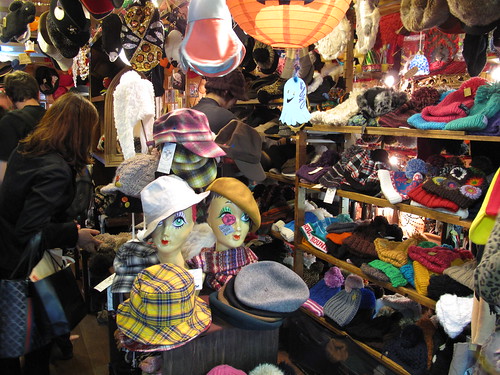
 Hat shop in Shimo Kitazawa, by theefer
Hat shop in Shimo Kitazawa, by theefer